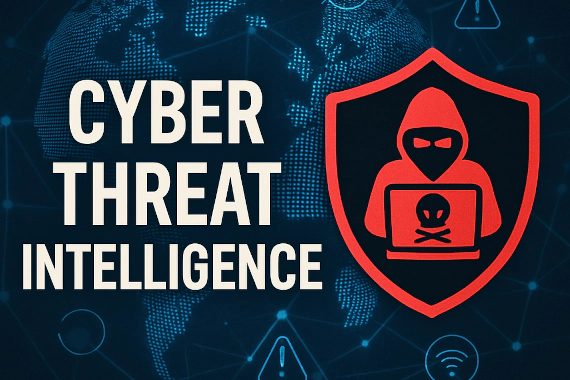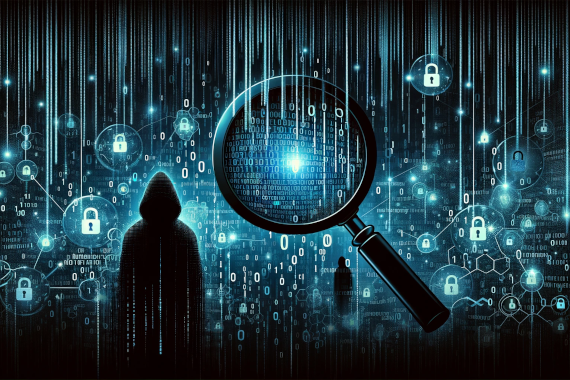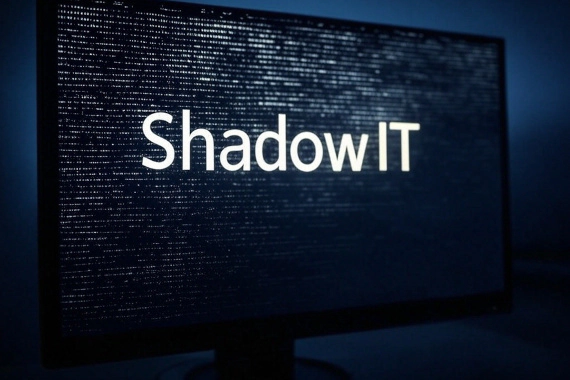FACT: Billions of sensitive records, including employee credentials and internal company documents, have been leaked to the dark web this year alone.
To make matters worse, the average cost of a data breach has risen to USD 4.45 million, according to the 2023 IBM Cost of a Data Breach Report.
Being able to mitigate the risk of leaked data before it’s exploited is critical.
Most companies wouldn’t even know if their data was for sale on an underground marketplace.
In this post, we’ll cover what dark web monitoring is, how it works, who needs it, and what features to look for.
What is Dark Web Monitoring?
Dark web monitoring is a service that helps organizations detect if their sensitive information, such as employee credentials, session tokens, financial records, or internal company documents, has been leaked or sold on the dark web.
The dark web is a part of the internet that is not indexed by search engines and is often associated with illegal activities.
Depending on the data source, it may require specialized software or authorization to access.
Dark web monitoring services alert organizations when their sensitive information is found on the dark web. This allows the security team to mitigate the risk before the data is exploited.
RECOMMENDED READING: Is dark web monitoring worth it?
Who Needs Dark Web Monitoring Services?
Dark web monitoring is essential for any organization with access to sensitive data, including:
- Small/Medium Businesses and Enterprises: Companies of all sizes use dark web monitoring tools to protect their customer data, intellectual property or employee records. This is especially important in regulated industries that handle sensitive information, like finance, healthcare, and legal services.
- Financial Institutions: Banks, credit unions, and other financial organizations are prime targets for attacks. Dark web monitoring can help detect potential threats to their customers’ financial information, such as credit card numbers, account details, and social security numbers.
- Government Agencies: Government entities often hold vast amounts of sensitive information, making them targets for espionage and cyberattacks. Dark web monitoring can help protect national security, prevent identity theft of its citizens, and detect potential threats. It can also be used to comply with regulations and to prevent leaks that could compromise public safety or national interests.
- Healthcare Organizations: With strict regulations around patient data and the high value of medical information on the dark web, healthcare providers need dark web monitoring to ensure compliance and protect sensitive data.
- Educational Institutions: Schools, universities, and other educational institutions store the personal data of students and staff, making them potential targets for cyberattacks. Dark Web Monitoring can help protect this information and comply with privacy standards (like FERPA in the United States).
- Legal and Professional Services Firms: Law firms, accounting firms, and other professional service organizations handle a vast amount of sensitive client information, including personal data, financial records, and proprietary business information. Dark web monitoring can help detect if any of this information has been compromised and is being leaked or sold on the dark web.
- IT Security Teams: Security teams use dark web monitoring tools as a part of their broader defensive infrastructure to gather intelligence about emerging threats and cybercrime trends. Pen testers and red teams use the data to escalate privileges during engagements.
- Retailers: Retailers often possess a large amount of customer data, including personal information and payment details. Dark web monitoring can help prevent account fraud, maintain compliance and prevent breaches leading to reputational damage.
- Private Individuals: One of the primary benefits for private individuals is the early detection of personal information, such as Social Security numbers, credit card details, or bank account information, being sold or shared on the dark web. Early warnings enable folks to take quick action to prevent identity theft and financial fraud.
- Non-profit Organizations (NPOs): NPOs often handle sensitive data, including donor information, financial records, and personal details of beneficiaries. Dark web monitoring can help detect if any of this information has been compromised and is circulating on the dark web.
RECOMMENDED READING: How To Find Data Breaches
How Does Dark Web Monitoring Work?
Dark web monitoring works through a hybrid approach of automated and manual scanning through various parts of the dark web. Here’s a general overview of how the process works:
- Data Collection: Dark web monitoring tools use automation alongside manual processes to index specific pieces of information that may indicate a data breach. The combined approach allows security teams to collect data from various sources on the dark web, including forums, chat rooms, marketplaces, and private Telegram channels. The data can include leaked or stolen personal information, credentials, session tokens, Social Security numbers, credit cards, and financial details, as well as other sensitive data.
- Data Analysis: Collected data is first verified that it is what it claims to be. Next, the data is analyzed to identify and extract the important parts. This involves filtering out noise and irrelevant data to focus on data that can be exploited.
- Alerting: If the dark web monitoring tool finds information that matches the details of a monitored asset, it generates an alert. These alerts are typically sent via email, webhook, or through a dashboard.
- Response and Mitigation: Once an alert is received, the security team can take appropriate actions to mitigate the risk. This may include changing passwords, terminating session tokens, geofencing assets, or taking legal action if necessary.
- Continuous Monitoring: New data is constantly being added to the dark web. In addition to continuously scanning for new threats and alerting on matches, monitoring services need to update their sources on an ongoing basis as new threat actors surface.
Benefits of Dark Web Monitoring
Dark web monitoring is a valuable tool. There are several main benefits from continuously monitoring the dark web, including:
- Early Detection of Data Breaches: Dark web monitoring can provide early warning signs of a data breach by detecting when sensitive information appears on the dark web. This allows organizations to respond quickly to mitigate the impact of the breach.
- Protection of Sensitive Information: By monitoring the dark web for their proprietary data, customer information, or employee credentials, organizations can take steps to protect this information and prevent it from being used for fraud and account takeovers.
- Regulatory Compliance: Many industries have regulations that require organizations to protect sensitive data and report breaches. Dark web monitoring can help organizations comply with these regulations by providing evidence of proactive security measures.
- Reputation Management: A data breach can significantly damage an organization’s reputation. By detecting breaches early, organizations can minimize the reputational impact.
- Cost Reduction: The costs associated with a data breach can be substantial, including legal fees, fines, and loss of business. Early detection and response through Dark Web Monitoring can reduce these costs.
- Risk Management: By identifying potential threats with third-party partners and suppliers, organizations can better assess and manage their risk exposure, leading to more informed decision-making
There are a number of ways personal information gets on the dark web. These include:
- Data Breaches: Hackers gain access to company databases, stealing sensitive customer information such as email addresses, passwords, credit card details, and social security numbers.
- Phishing Attacks: Cybercriminals trick their victims into providing personal information through fake emails, websites, or messages designed to appear legitimate.
- Malware Infections: Malicious software, such as infostealers and keyloggers, can capture personal data from infected devices.
- Social Engineering: Scammers manipulate victims into revealing confidential information through phone calls, social media, or impersonation attacks.
- Data Exposed Publicly: Misconfigured servers (e.g. an open S3 bucket) or human error can expose personal information.
- Physical Theft: Stolen devices or documents containing personal or sensitive data.
Once obtained, this information is often sold, traded, or shared among cybercriminals.
The data is then exploited for identity theft, financial fraud, and other cybercrimes.
Not really.
Removing your information from the dark web is difficult because the dark web operates in a decentralized and anonymous environment.
This makes it nearly impossible to track or control data once it’s exposed.
When personal information is leaked, it is often copied, sold, and shared across multiple marketplaces and forums.
Even if one site is taken down, the data usually resurfaces elsewhere.
Dark Web Monitoring Features To Look For
The effectiveness of dark web monitoring depends on its features. Some of the more important ones to look for include:
- Comprehensive Coverage: The service should index a wide range of sources on the dark web, including forums, marketplaces, Telegram channels, and 3rd party breaches.
- Real-Time Alerts: Prompt notification is crucial. The service should provide real-time or near-real-time alerts when your information is detected, allowing you to take immediate action.
- Detailed Reports: The service should provide detailed reports on any discovered data, including the type of information found, where it was found, and the potential risks associated with the breach.
- Customizable Monitoring: The ability to customize which assets are monitored (e.g., domain names, personal email addresses from the C-level exec team, session tokens, IP addresses for remote admin servers, etc.) can help focus alerting on the most relevant and sensitive data.
- API: A powerful API allows you to automate the monitoring and remediation of breached credentials and session tokens. In addition, leveraging the service’s API with your SIEM or SOC allows you to have one central reporting interface.
Need visibility into the dark web to find your breached data? Book a demo to see how Breachsense enables your security team to identify and mitigate security risks before they’re exploited.



